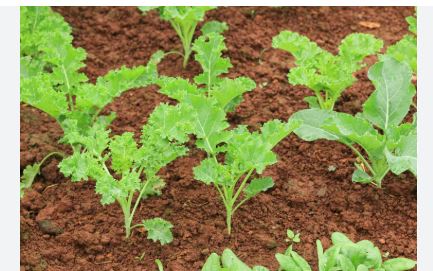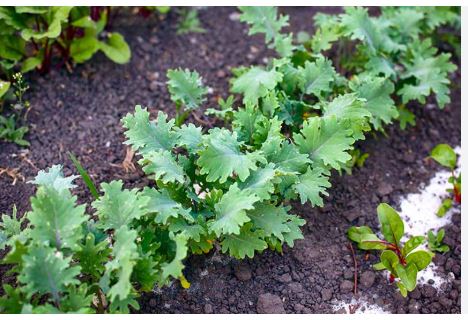
Botanical Classification
Baby kale refers to the young, tender leaves of various kale cultivars, primarily Brassica oleracea var. acephala (e.g., curly or Lacinato kale) or Brassica napus var. pabularia (e.g., Red Russian kale), within the Brassicaceae family. This family includes cruciferous vegetables like cabbage, broccoli, and mustard greens.
The acephala and pabularia varieties denote non-heading brassicas, grown for their edible foliage. Baby kale is not a distinct species but rather an immature stage of these kale types, harvested early for its delicate texture and flavor, sharing the same botanical lineage as mature kale derived from wild Mediterranean cabbage.
Origin and History
Kale has been cultivated since ancient times, with origins in the eastern Mediterranean and Asia Minor around 2000 BCE, where it was a staple in Greek and Roman diets. Baby kale, as a modern culinary trend, emerged in the early 2000s during the rise of health-conscious eating in North America and Europe.
Farmers began harvesting kale leaves at 2-4 weeks old to meet demand for tender, nutrient-rich greens in salads and smoothies. Its popularity soared with the superfood movement, and regions like Ecuador’s highlands, with their cool climate and fertile volcanic soil, became key producers for global markets. Today, baby kale is a grocery store staple, often sold in pre-washed blends.
Identifying Characteristics

Baby kale is characterized by its small, tender leaves, typically 2-4 inches long, harvested before the plant matures. Depending on the cultivar, leaves may be smooth and oval (Lacinato), frilly (curly), or lobed with red veins (Red Russian), but all are softer and less fibrous than mature kale.
Colors range from bright green to deep purple, with vibrant stems in some varieties. The leaves lack the tough, woody stems of mature kale, offering a delicate, crisp texture. Baby kale’s compact size and attractive appearance make it a popular choice for both culinary dishes and garnishes in U.S. markets.
Taste
Baby kale has a mild, slightly sweet flavor with a subtle peppery or nutty undertone, far less bitter than mature kale, making it approachable for a wide audience. Its texture is crisp and tender, ideal for raw consumption without massaging, unlike tougher kales.
The flavor varies slightly by cultivar—curly baby kale may have a faint bitterness, while Red Russian is sweeter—but all are delicate. When lightly cooked, it develops a soft, spinach-like taste, enhancing its versatility in American cuisine, from salads to quick-cooked sides.
Seasons/Availability
Baby kale is a cool-season crop, thriving in temperatures between 7-24°C (45-75°F), with frost tolerance down to -12°C (10°F). In the USA, it’s planted in early spring (February-March) or late summer (July-August), maturing in 20-30 days, faster than mature kale, and is available from late spring (April-May) through early winter (November-December).
It grows in USDA zones 2-11, with major production in California, Oregon, and New York. Year-round availability is common in U.S. supermarkets due to greenhouse cultivation and imports, with fresh baby kale sold in bags, clamshells, or mixed greens, peaking in cooler months.
Culinary Uses
Baby kale’s tender texture and mild flavor make it a versatile ingredient in American cuisine. Raw, it’s a popular base for salads, blending seamlessly with fruits, nuts, cheeses, or light dressings, requiring no preparation beyond rinsing, as seen in trendy U.S. eateries. It’s a staple in smoothies, adding nutrients without overpowering flavors, favored by health-conscious consumers.
Lightly sautéed or wilted, it pairs well with garlic, olive oil, or eggs in side dishes or breakfast bowls. Baby kale is also used in soups, pasta, or grain bowls, and its delicate leaves serve as garnishes, offering zero-waste versatility in casual and gourmet dishes.
Nutritional Value
Baby kale is a nutrient-dense superfood, low in calories (about 25-30 per cup raw) and packed with vitamins, minerals, and antioxidants. It’s an excellent source of vitamins K, A, and C, providing over 100% of daily needs per serving, supporting blood clotting, vision, and immune function.
It offers 2 grams of fiber per cup, aiding digestion, and is rich in calcium, iron, and magnesium for bone and blood health. Antioxidants like quercetin and kaempferol provide anti-inflammatory and heart-protective benefits. Baby kale also contains folate and small amounts of omega-3 fatty acids, making it a powerhouse for plant-based diets.
Cultivation of Baby kale
- Climate and Season: Baby kale thrives in cool weather, with optimal temperatures between 7-24°C (45-75°F), and tolerates frosts down to -12°C (10°F). In the USA, plant in early spring (February-March) or late summer (July-August) for spring and fall harvests. It grows in USDA zones 2-11, with year-round cultivation in mild areas like coastal California and peak fall harvests in colder regions like Vermont.
- Site Selection: Choose a site with full sun (6-8 hours daily) for optimal growth, though partial shade is tolerated in warmer states like Florida or Texas to prevent bolting. Ensure good air circulation to reduce fungal disease risk, particularly in humid areas like the Southeast.
- Soil Requirements: Prefers fertile, well-drained, loamy soil with a pH of 6.0-7.5. Enrich with organic matter like compost or aged manure. In regions with clay soils (e.g., Midwest) or sandy soils (e.g., Southeast), amend with compost to improve drainage and fertility for tender leaf production.
- Soil Preparation: Loosen soil to 8-10 inches deep, mixing in 1-2 inches of compost or organic matter. Remove rocks and debris to ensure uniform seedling growth. Conduct a soil test through local extension services (e.g., USDA’s NRCS) to confirm pH and nutrient levels, adjusting with lime or sulfur as needed.
- Planting: Sow seeds ¼ inch deep, spacing 2-4 inches apart in rows 12-18 inches apart for dense planting, as baby kale is harvested young. Thin seedlings to 4-6 inches apart if needed. Alternatively, transplant seedlings started indoors 4-6 weeks earlier, common in shorter-season areas like Minnesota. Direct sowing works well in milder regions like California.
- Watering: Keep soil consistently moist but not soggy, providing 1 inch of water weekly, adjusting for rainfall. Use drip irrigation, popular in arid states like Arizona, to avoid wetting leaves and reduce disease risk. Mulch to retain moisture, especially in hot, dry regions like the Southwest.
- Fertilization: Apply a balanced fertilizer (e.g., 10-10-10) at planting, followed by a light nitrogen-rich fertilizer (e.g., fish emulsion) every 3-4 weeks to promote leafy growth. Avoid over-fertilizing, which can lead to tough, fibrous leaves, particularly in humid areas like the Gulf Coast.
- Mulching: Add a 1-2 inch layer of organic mulch, such as straw or grass clippings, to conserve moisture, suppress weeds, and keep soil cool. This is critical in regions with temperature swings, like the Midwest, or hot summers, like the Southeast, to stabilize soil conditions for young plants.
- Pest Management: Monitor for pests like aphids, flea beetles, and cabbage worms, which target tender kale leaves. Use floating row covers in organic farms (e.g., Oregon), neem oil, or introduce beneficial insects like ladybugs, popular in California. Hand-pick caterpillars for small gardens, effective nationwide.
- Disease Control: Prevent fungal diseases like powdery mildew and downy mildew, common in humid regions like the Southeast, by ensuring air circulation and avoiding overhead watering. Rotate crops every 2-3 years, standard in intensive farming states like California, to reduce soil-borne pathogens.
- Harvesting: Harvest leaves when 2-4 inches long, about 20-30 days after planting, snipping outer leaves close to the stem to encourage regrowth. Start in late spring (April-May) or fall (September-November), with frequent harvests to maintain tenderness, ideal for U.S. markets. Harvest in cooler climates like New York for extended yields.
- Succession Planting: Sow seeds every 1-2 weeks in spring or fall for a continuous supply, a common practice in mild climates like California’s Central Valley. In shorter-season regions like Wisconsin, focus on spring and late summer plantings to maximize harvests before hard freezes.
- Storage and Preservation: Store fresh baby kale at 0-4°C (32-40°F) in a perforated plastic bag in the refrigerator for up to 1-2 weeks, standard for U.S. households. For long-term storage, blanch leaves for 1-2 minutes, cool in ice water, dry thoroughly, and freeze to preserve nutrients, a popular method for winter use. Wash and dry before storing to maintain freshness.